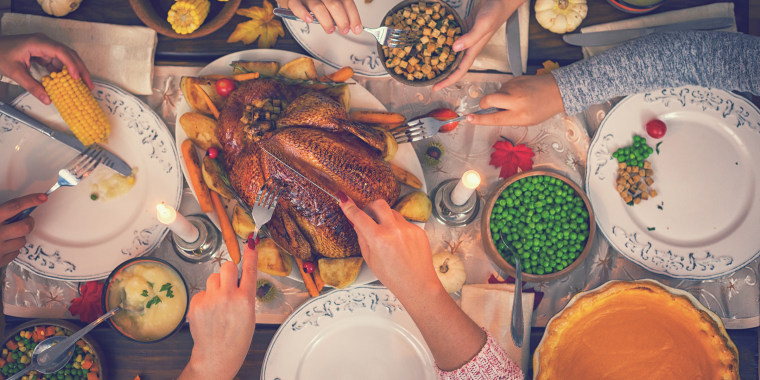Medical experts around the country fear that small family gatherings for Thanksgiving could lead to a surge in the coronavirus as people from multiple areas gather together in confined, indoor settings with no masks on. Most recommend canceling Thanksgiving or only celebrating with immediate family members.
"The lowest level of risk is limiting your gathering to the unit you're sheltering with already. Thanksgiving is not the time to expand your bubble," said Dr. Patrick Kachur, a professor at the Columbia University Mailman School of Public Health in New York City, told TODAY.
If you are determined to celebrate holidays with people outside your immediate household, you and the others attending should quarantine for two weeks in advance to make it as safe a gathering as possible. With Thanksgiving coming up on Nov. 27, that means you should start that period now.
Why do we need to quarantine for Thanksgiving?
With coronavirus surging across the country, it's important that people do everything they can to slow the spread so that hospital systems aren't overwhelmed. The best way to do this is to celebrate Thanksgiving virtually or just with the people you're living with, but a two-week quarantine can help ensure that nobody at your gathering is carrying coronavirus.
"I think the first thing is try to minimize your contact with other people before you get back together with family," Dr. Lucian Davis, an associate professor of epidemiology at the Yale School of Public Health, told TODAY earlier in November. "... We're often concerned when people come together from different groups, because that can promote spread of coronavirus from person to person."
That quarantine period should also include travel: If you are seeing family who live on the other side of the country, quarantine in a hotel if possible. If you can't quarantine in that location, try to avoid taking public transit to get there.
If you're inviting relatives who are senior citizens or who are immunocompromised, it's even more important to quarantine.
How do I quarantine?
Quarantining before the holiday should mean not leaving your home unless it's absolutely essential.
Replace restaurant dining with contactless takeout or delivery options. Switch in-person social gatherings for Zoom chats or phone calls. If you can, work remotely for the two-week period and see if any school can be done virtually.
If you do have to go out, make sure you take as many precautions as possible, including masking, social distancing and frequent hand-washing.
"I think that you can sensibly minimize your risk by wearing a mask and cleaning your hands and practicing the other things that we know are important, like distancing," he said. "I don't think you can eliminate risk, but I think you want to try to do everything you can to minimize your risk."
Can't I just get a coronavirus test?
A coronavirus test can't replace a two-week quarantine. If you take the test before quarantining, you'll know you aren't currently positive, but since the virus has a two-week incubation period, it's important to isolate.
"A negative test sort of tells you that you very likely don't have COVID on the day you're tested, but if it's incubating you could become sick later," Davis said. "Let's just say you test negative ... Once you get home, you might develop symptoms and in the period even before that you might be spreading to your family."
What activities are safe to do?
Even if you do quarantine, not all Thanksgiving activities are the same level of risk. The Centers for Disease Control and Prevention (CDC) put out a list of activities, ranking them from lower-risk to high-risk.
Lower risk activities:
- A small dinner with the people in your household
- A virtual dinner with family and friends
- Preparing food for family and neighbors (especially those at higher risk of severe illness from COVID-19 who are social distancing), and delivering it to them without person-to-person contact
- Shopping online rather than in person on Black Friday and Cyber Monday
- Watching sports events, parades and movies at home
Moderate risk activities:
- A small outdoor dinner with family and friends who live in your community
- Visiting pumpkin patches or orchards where people are taking COVID-19 safety precautions like using hand sanitizer, wearing masks and maintaining social distance
- Small outdoor sports events with safety precautions in place
Higher risk activities:
- Going shopping in crowded stores just before, on or after Thanksgiving
- Participating or being a spectator at a crowded race
- Attending crowded parades
- Using alcohol or drugs
- Attending large indoor gatherings with people from outside of your household




